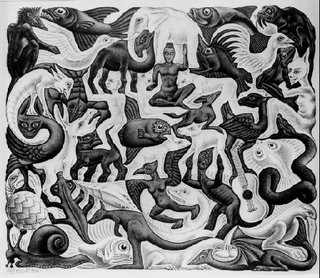Defining a "perfect" distraction
Perfection is one of the most, well, perfect writing distractions. It is well suited for the creative person shaping and molding. After all, don't we all want something we create to be perfect? How many of us write a draft, only to find ourselves stuck over a word, a phrase or the perfect shade of ink. We're seeking, searching for something perfect. One of the elements in improving our own writing is to move past some of the distractions that crop up. Wrestling with perfection seems to work against what we truly want to do. But what is perfection, really? Who dictates what is perfect? One of my graduate school professors discussed The Great Gatsby as the perfect novel. I have some perfect novels in a desk drawer, but a few literary agents didn't think them so perfect. The Great Gatsby, my professor explained, may be perfect, but it is a flawed perfection because no writing can be absolutely flawless. That's what keeps me at my computer tapping away or taking hours to scratch out my ideas in my notebooks. The search for perfection, even with some marred facets. Do I think I'll attain perfection in my writing? I don't know. I do know that I won't let it get in the way of my sitting down to write. How about you? What are your biggest internal distractions when you look at the blank page in front of you?Elizabeth King Humphrey is a writer and creativity coach. Besides contributing to AOL's ParentDish, she blogs at The Write Elizabeth, delving into creativity in everyday places.Labels: Elizabeth King Humphrey, the process, writing practice
Quote Starters
-794641.jpg) When you're not sure what to write about, pondering a quotation can be a useful way to get started. The easiest thing to do is pick a quote you like and let yourself freewrite for ten or fifteen minutes. When you're done, you'll probably find the makings of an essay, article, or short story! Below are some quotes you can use to spark your writing. Take a serious or a humorous approach with your response, whatever you prefer. I can envision some good stuff coming from any one of them. For fun, try picking a number between one and ten, then doing a timed freewrite based on the corresponding numbered quote below. 1. "The only normal people are the ones you don’t know very well." -Joe Ancis 2. "The lowest ebb is the turn of the tide." –Henry Wadsworth Longfellow 3. "If you have a job without aggravations, you don’t have a job." -Malcom Forbes 4. "There is no such thing as 'fun for the whole family'." -Jerry Seinfeld 5. "The beginning is always today." -Mary Wollstonecraft Shelley 6. "Keep your eyes wide open before marriage, half shut afterwards." -Benjamin Franklin 7. "Housework can't kill you, but why take a chance?" -Phyllis Diller 8. "Ever notice that 'What the hell' is always the right decision?" -Marilyn Monroe 9. "You may have to fight a battle more than once to win it." –Margaret Thatcher 10. "Only time can heal your broken heart, just as only time can heal his broken arms and legs." -Miss Piggy --MP*image courtesy of tomswift46, flickr.com Labels: freewriting, Inspiration, Marcia Peterson, quotations, writer inspiration, Writers Block, writing, writing practice, writing prompts
Prospector or Procrastinator?
by Sharon Mortz I am writing a play – my first -- and as a new writer, I am a naïve enough to hope it will be produced. One reason I have so much faith is that I live in San Francisco where there are more theaters than Chinese restaurants. There are the big, electric, star-studded productions in huge, regal theaters as well as medium-sized, lower priced, but still excellent theater. Since I started my investigation several months ago, I’ve discovered small theatres that seat 15 to 20. This is where I’ll start my play pandering. I was editing my play this morning, when I took a break and picked up The Writer magazine. I have a backlog of “how to write” magazines and I encounter a new, sparkling idea every time I peruse one. Like a pan handler discovering gold, I read and sift through pages. Am I a prospector or procrastinator? This morning I stumbled upon an article that suggested inscribing bits/phrases/words from an article/play/story in progress on 3X5 cards and play cards. Shuffle and deal then fill in the interstices. I love twists in my stories and my shuffling netted a surprise ending that I don’t think the audience will predict. Another practice to loosen creativity is the “wild and stuffy” exercise. I love this idea. It’s freeing. Set a timer for four minutes and write as stiffly and prudishly as you can. Four minutes of genteel pomp resulting in exceedingly stuffy. When the timer goes off, set it again for four minutes and write wildly, loudly and outrageously. Obscenities are allowed. My pen goes wild and I release anger, passion and furious fervor. When the timer goes off, go back to restraint and respectability. For fun, I may go through my magazines and cut out words in various fonts, paste them on paper like a movie ransom note and see if new ideas emerge. Could this be another twist in my play? Labels: Sharon Mortz, writing practice
15 Minutes
In fifteen minutes I can vacuum my living room well, using the attachments on my vacuum to get the dust bunnies out of the couches. In fifteen minutes I can clean out my fridge, discarding old food and wiping down some of the surfaces. In fifteen minutes I can do rotations of sit-ups, push-ups, wall-sits, squats, calf-raises and lunges. Well, let’s hope I can last even fifteen minutes doing these things. So where do these thoughts of fifteen-minute-productivity come from? I’m reading what I think will prove to be a great book, Pen on Fire by Barbara DeMarco-Barrett. In her book, DeMarco-Barrett encourages us to find “stolen moments” in our day. “Somewhere during your day,” she says, “you have at least fifteen minutes you can use to write. Start there. Try the first thing in the morning, the last thing at night. When are you the most lucid? The most creative? See what works.” The author also says that if we can’t find fifteen minute chunks of time to write, maybe we need to re-evaluate whether writing is something that can fit in our lives at this time. Ouch, that’s a reality check. When it comes to writing, fifteen minutes can be powerful. I’ve bought into the school of thought that I need an hour or two or a weekend away to accomplish anything for my writing. But I have a husband, two small children, friends, volunteer and house work and frankly I need time to shower. If I choose to write only in those times when I have an hour to myself, I will either never sleep or never write, and the need for sleep catches up to you. So it will be writing that goes out the window. Let’s crunch some numbers. In fifteen minutes I can write about 500 words if I’m typing. If I find fifteen minutes a day, four times a week, over the course of the year that is 104,000 words. That equals a good sized novel or a hundred average length feature articles, hundreds of poems or a basketful of short stories. And all that comes from committing only an hour a week to writing. I, and I think many people, have an all or nothing mindset that paralyzes us. We feel that if a little of something is good, then a lot of it is better. I say, “If I could get 104,000 words written in a year, doing just 15 minutes, what if I did 30 minutes?” After I raise the bar for myself from a reasonable goal, I inevitably get distracted or behind and then guilt or pressure sets in. What was once a fun thing, my writing, becomes a chore. It joins the ranks of my to-do list along with folding the laundry and going to the dentist. Wow, sounds fun. by Susan L. Eberling Labels: balance, goals, writing practice
Baby-steps to Fiction
Over the last few years I have been dabbling more and more with writing short fiction. Generally I am most comfortable writing non-fiction, but one summer day the inspiration struck me to write a short story. Since it was nap-time for my two-year-old I took my seven-months-pregnant self downstairs to the computer to try my hand at short fiction writing again. I’ve never been officially trained in short-story writing or any kind of fiction. I surfed the web and found a site that explained the typical components of a plot. I mulled over the definitions of the lead-in, the precipitating incident and the rising action. Climax and falling-action seemed understandable, though tricky to write. I had to look up denouement on several sites to get a clear idea of this concept. I knew I needed to take baby-steps to learn to write short fiction. The thought of starting with the lead-in and writing the climax and denouement without a plan made me slightly short of breath. I only had about a half an hour before naptime was over, so I knew I couldn’t write for very long. With all of this information swirling around my head, I developed my own short fiction writing exercise that I could complete in about half an hour. Here’s what I did. I told myself to write one sentence for every basic plot structure component. That meant only one sentence for the lead-in, the precipitating incident and so on. Here are the plot components I used and here is the first paragraph that I came up with (color coded of course): Lead-in
Precipitating Incident
Rising Action
ClimaxFalling Action DenouementWhen I was a child I lived in the mountains of Colorado. One summer we went away on vacation for a few weeks and came back to find our house robbed and ransacked. As a child I couldn’t understand why some of my larger, more expensive toys were gone. My mother circulated the rumor that my brother’s friends, knowing from my brother that we were out of town, had been the perpetrators. Nothing came of those rumors, however, at least nothing concrete that brought my toys back. So I did without my toys and eventually forgot about them.
I was surprised by how things turned out. It seemed like I expressed an idea very completely and in a more satisfactory manner than my usual fiction ramblings. It also surprised me because, though had its own mini-plot, it seemed like this piece could be a small piece of a larger story. Later that week I did the same exercise again, only this time I had two sentences per plot element. This is what I produced: In a cold, quiet forest, a small squirrel ran up a lodge-pole pine tree, skipping from one trunk to another, gripping the bark with its claws. Below the now sky-borne squirrel, the lumbering of a brown bear on its water path broke into the quiet of the forest with snapping of twigs, the rustling of leaves and the bear’s own heavy, rumbled breathing. The bear descended the hill in front of him, following his normal route to the small silvery pond for a drink of water. But the bear stopped; no ordinary animal possessed that smell. Through the trees at the edge of the pond a man in a red and black plaid flannel shirt and jeans was squatting, filling his silver water canteen. The man turned suddenly, sensing the nearness of something; in what seemed like the same instant the bear sprinted and lunged at him. The man fumbled at his waist, trying to get something free. His gun went off, the sound reverberating through the trees, through the silence, shattering the stillness. The gun was flung from the man’s hand at the onslaught of the brown bear’s attack. The man attempted to fight the heavy bear with his fists and with swift kicks before the beast was upon him, pinning him to the forest floor. The two creatures resisted each other in a few tense moments of struggle before the man was overcome. The last sound the man remembered before fading into blackness was the bear’s lumbering breathing at his throat.
I hate writing stuff that twinges of tragedy, but this is what came to mind that day (interesting how mood can affect our writing). It was satisfying to me to being able take baby-steps to understand how my own writing style can interact with plot structure. This exercise challenged the way I thought about writing fiction but it also stimulated my creativity and excited me about the possibilities that fiction might hold for me. Am I touting this as a way to write short stories? No, not really. For me these were exercises, ways to slowly but surely push me out of my non-fiction comfort zone into a new world of short fiction. -Susan L. EberlingLabels: life and writing, short fiction, writing inspiration, writing practice
Going Seamless
 Tessellations--shapes repeated again and again to fill a plane without gapping or overlapping--create intricate and seamless pieces of artwork, like M.C. Escher’s work shown here. A reprint of this specific work hangs on a wall near my desk. My eyes drift toward it whenever I’m tired of working with words. The blend of animals, people, and fantasy creatures transports my mind to different places, stories, and memories. Somehow Escher’s art refreshes my thoughts. I glimpse something different each time I look into it. Escher once said, “I don’t grow up. In me is the small child of my early days.” I think this statement is true for many people. My inner child still thrives as a big part of who I am today, from the activities and sports I choose with my kids to the stories I write. My fiction follows from adventures I lived as a kid. My grandparents and parents owned 27 acres of farmland on the outskirts of Allentown, Pennsylvania, and I remember exploring every square inch--the tops of the tallest pine trees that bordered the land, the sugar maples near the houses, the silk mimosa tree, the barns, garages, root cellar, tree house, manmade pond, attics, basements, and hundreds more intriguing places most kids would love to explore. It seemed endless. The strangest aspect about fiction is how real it becomes as we write it. I remember telling someone recently in an email that I grew up on a 32-acre farm. But that was wrong. I simply typed my fictional number instead of the real one. Somehow my stories are becoming more real to me than the real place I started using as my fiction base. I don’t know if this is good or bad or if it matters. Unfortunately, that farm no longer exists. A huge freeway runs through what used to be a childhood paradise. Yet I can’t think about that aspect. Even though it’s been replaced with rebar, concrete, asphalt, and barriers, its special hideaways and secret places still exist in my memory, or at least most of them. So, where am I going with this? Tessellations usually apply to art and math. Of course, not all shapes can tessellate. In the same way, not all story details, words, or plot ideas work together, seamlessly. But writers need to achieve seamlessness. In Self-Editing for Writers: How to Edit Yourself into Print, Renni Brown and Dave King write, “The surest sign that you’re achieving literary sophistication is when your writing begins to seem effortless.” Writing, of course, isn’t effortless. But the illusion from the outside reading in is what matters. Fred Astaire made dancing look as natural and effortless as walking. M.C. Escher made art look so easy. Graceful authors do the same for their fiction. I hope that one day my fictional stories will flow as effortlessly as Escher’s tessellations--without gaps in plot or overlapping and repetitive words in the details. In his book, A Dash of Style: The Art and Mastery of Punctuation, Noah Lukeman reminds us that even the punctuation should be seamless. I guess it’s all just a matter of practice, practice, and ever-flowing practice. I'd love to hear other bloggers' input here. Do you use certain techniques to go seamless? What kind of exercises do you apply? What craft books do you use? I'd love to know, and I'm sure other writers would, too. Sue Labels: seamless fiction, tessellations, writing practice
|


-794641.jpg)










